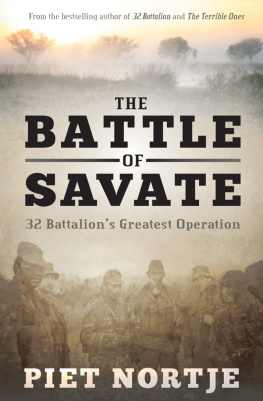This edition is published by PICKLE PARTNERS PUBLISHINGwww.picklepartnerspublishing.com
To join our mailing list for new titles or for issues with our books
Or on Facebook
Text originally published in 1965 under the same title.
Pickle Partners Publishing 2013, all rights reserved. No part of this publication may be reproduced, stored in a retrieval system or transmitted by any means, electrical, mechanical or otherwise without the written permission of the copyright holder.
Publishers Note
Although in most cases we have retained the Authors original spelling and grammar to authentically reproduce the work of the Author and the original intent of such material, some additional notes and clarifications have been added for the modern readers benefit.
We have also made every effort to include all maps and illustrations of the original edition the limitations of formatting do not allow of including larger maps, we will upload as many of these maps as possible.
HEADQUARTERS 1ST BATTALION, 7TH CAVALRY
1ST CAVALRY DIVISION (AIRMOBILE)
APO San Francisco, California 96490
9 December 1965
SUBJECT: After Action Report, IA DRANG Valley Operation 1st Battalion, 7th Cavalry 14-16 November 1965
Commanding Officer
3d Brigade
1st Cavalry Division (Airmobile)
APO US Forces 96490
I . GENERAL:
During this operation, I was the Commanding Officer of the 1st Battalion, 7th Cavalry. On 23 November 1965, I was promoted and turned over the battalion to my successor.
II. BACKGROUND:
A. On 10 November the battalion moved from the base camp at An Khe, coordinates BR476476, by CV--2 to a forward airstrip and assembly area south of Pleiku, coordinates ZA198340. From there, all companies were shuttled the same day by UH-1D into a search and destroy operation in an area to the east of Plei Me, vicinity coordinates ZA2007 to ZA7606. We conducted saturation patrolling through the 12th with light contact by only Company A. We also conducted a civic action program supplying medical aid and USOM food to Montagnard village, population 200, coordinates ZA237073. On the 12th, the Assistant Division Commander-A, during a visit to the battalion, indicated to the Brigade Commander that he had no objection to the latter sending a battalion into the IA DRANG Valley. This we took as an alert and began a map study. On 13 November, the battalion was moved on brigade orders to a new area of operations south and southwest of Plei Me. Once again saturation patrolling was conducted out of company bases throughout the day with no contact. Company B was airlifted after 1500 hours into the Brigade CP area as security, and for an immediate reaction force under Brigade control. It closed into position by 1800 hours.
B. At approximately 1700 hours, the Brigade Commander and I visited the Company A CP south of Plei Me. During the visit, the Brigade Commander gave me orders to execute an assault by helicopter into the IA DRANG Valley, north of CHU PONG Mountain early the next morning with a mission of conducting search and destroy operations through the 15th. The area of operations was pointed out on the map and he informed me that we would be supported from LZ FALCON, coordinates ZA023032, by two batteries of 105mm howitzer artillery one of which would be moved by air from PLEI ME early on the 14th prior to our assault.
C. I returned to my CP near Plei Me; formulated a tentative plan; issued instructions to my staff; procured further details from 3d Brigade Headquarters and the supporting helicopter unit; and issued a warning order to my unit commanders, staff, and supporting elements. By 2200 hours, 13 November, all preparations had been accomplished which were possible without an actual air reconnaissance. Arrangements included an early morning airlift of Company B back to PLEI ME; directions to the commanders of A and C Companies to concentrate their elements at first light in the largest pick-up zone(s) in their respective sectors; and plans for a first light air recon by all key commanders and staff officers. A time of 0830 hours was set for issuance at my CP of the operation order.
D. At this time, the fighting strength of my lettered companies as they went into the operation was as follows:
The shortages were primarily due to malaria and ETS discharges. Each company also had 3-5 men at base camp at An Khe as guards, sick, administrative retention, and base camp area development workers. There were 8-10 men on R and R or about going back to prepare for R and R.
III. OPERATIONS ON 14 NOVEMBER:
A. THE AIR RECON AND RESULTS:
(1) 14 November dawned bright and clear. Shortly after first light at 0630 hours, Company B was returned to battalion control at Plei Me and began making final preparations for its role as the assault company. The Chinooks which had carried B company back were commencing to move Battery A, 1st Battalion, 21st Artillery to LZ FALCON as planned. The air recon party had assembled and after a brief orientation on the purpose of the recon, flight route, and items to look for, we took off in two UH-1D's escorted by two gun ships. The flight route is shown on the Attached sketch (Tab A). We made one south to north pass at about 4500 feet actual; flew north past Duc Co, coordinates YA845255, orbited five minutes, then flew south generally over the same route and at the same altitude, and returned to Plei Me. The air recon party included the Battalion Commander; S-3; Battalion Artillery Liaison Officer; Commanding Officer, Battery A, 1st Battalion, 21st Artillery; Commanding Officer B Company (Assault Company); Scout Section Leader, Troop C, 1st Squadron, 9th Cavalry; and the Commanding Officer, Company A, 229th Assault Helicopter Battalion (Avn Co, 7th Special Forces, 1st Special Forces Group).
(2) During the air recon, several open areas were selected by members of the recon party as possible landing zones in and around the IA DRANG Valley. Upon return from the recon at about 0815 hours, we received a written Frag Order from Brigade which specifically defined the area of operations. The area is shown on the attached map (Tab B). I then received comments as to the LZ to be used. Three possibilities fell out of this discussion LZ's TANGO, X-RAY, and YANKEE (See Tab B). TANGO was discarded as the primary LZ for being to [o sic] tight, e.g. a wall type LZ with tall trees around it, and for being to [o sic] small capacity of three to four UH-lD's. It was agreed that X-RAY and YANKEE could both probably accommodate eight UH-lD's at one landing. I tentatively decided on LZ X-RAY and prepared to issue my operation order based on that selection. Concurrently I dispatched the Cavalry Scout Section for a low-level flight up the IA DRANG Valley area to gain detailed information on X-RAY, YANKEE, the surrounding terrain, and to look for signs of enemy activity. The Cavalry Section returned in approximately 40 minutes with the information that YANKEE was spotted with high stumps and would be difficult to use as a landing zone. The Cavalry Section confirmed that LZ X-RAY could take eight to ten UH-1D'B at one time. No signs of enemy activity were detected around X-RAY, and the Cavalry Section was not fired on during its low-level recon. Several trails were picked up and their locations were noted. The Cavalry Section also reported seeing commo wire on a trail north of X-RAY which led east and west. No trails led through LZ X-RAY, I made my decision to land at X-RAY with TANGO and YANKEE as alternates to be used only on my order. I then issued an oral operation order. Reduced to writing, it is attached at Tab C. Present to hear the order were all my Company Commanders; the battalion staff and special staff; the lift Company Commander and his Liaison Officer to the battalion, the Cavalry Scout Section Leader; CO, Battery A, 1st Battalion, 21st Artillery; and the 3d Brigade S-3. The Brigade Commander arrived during the issuance of the order and was separately briefed shortly thereafter. It was then reported to me that the two artillery batteries were in position, and I set a time of 1030 hours for the assault landing with the 20 minute tube artillery preparation to be timed to be completed at H-Hour minus one minute. The A and C Company Commanders were then flown back to their companies. The B Company Commander returned to his unit on the Plei Me Airstrip on a mechanical mule. The time was approximately 0915 hours. All necessary preparations had either been completed or were nearing completion. No problems had been raised.















